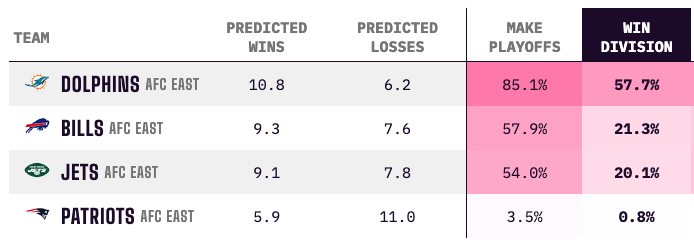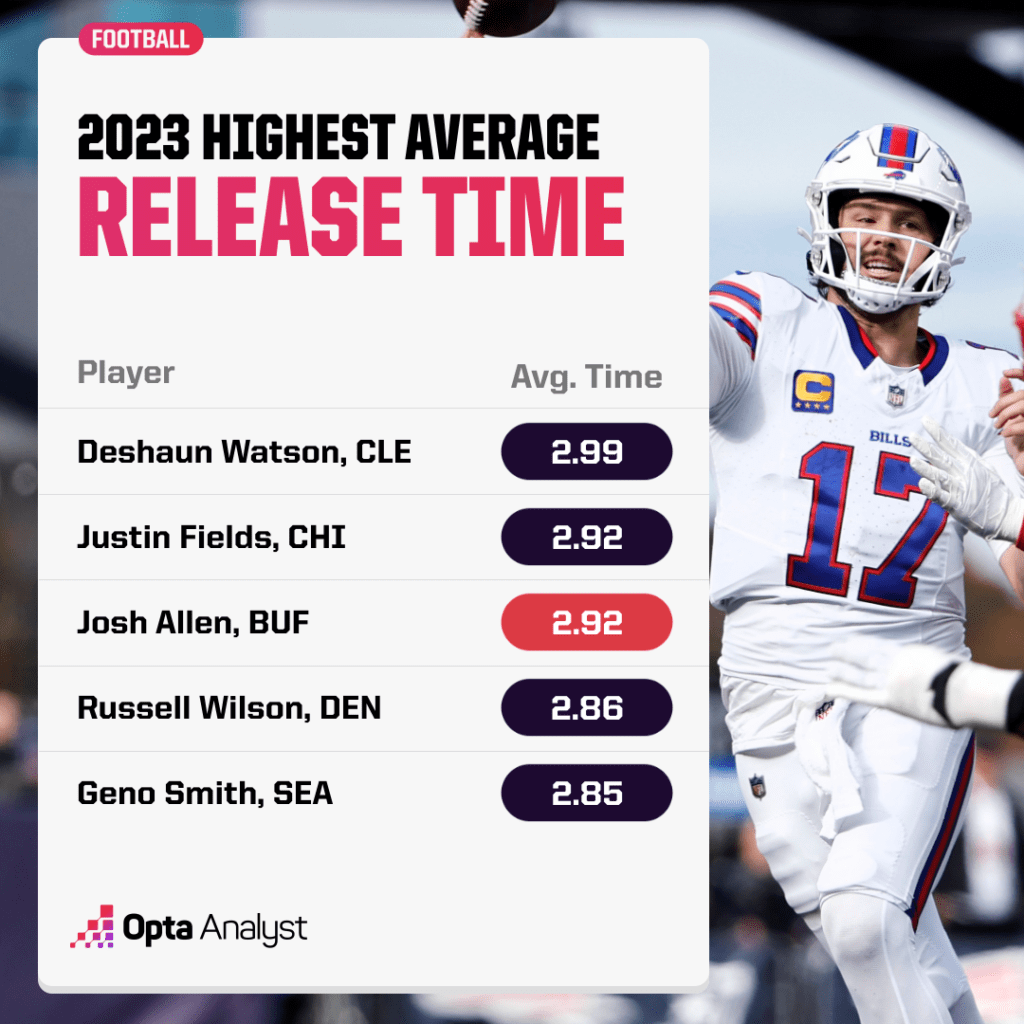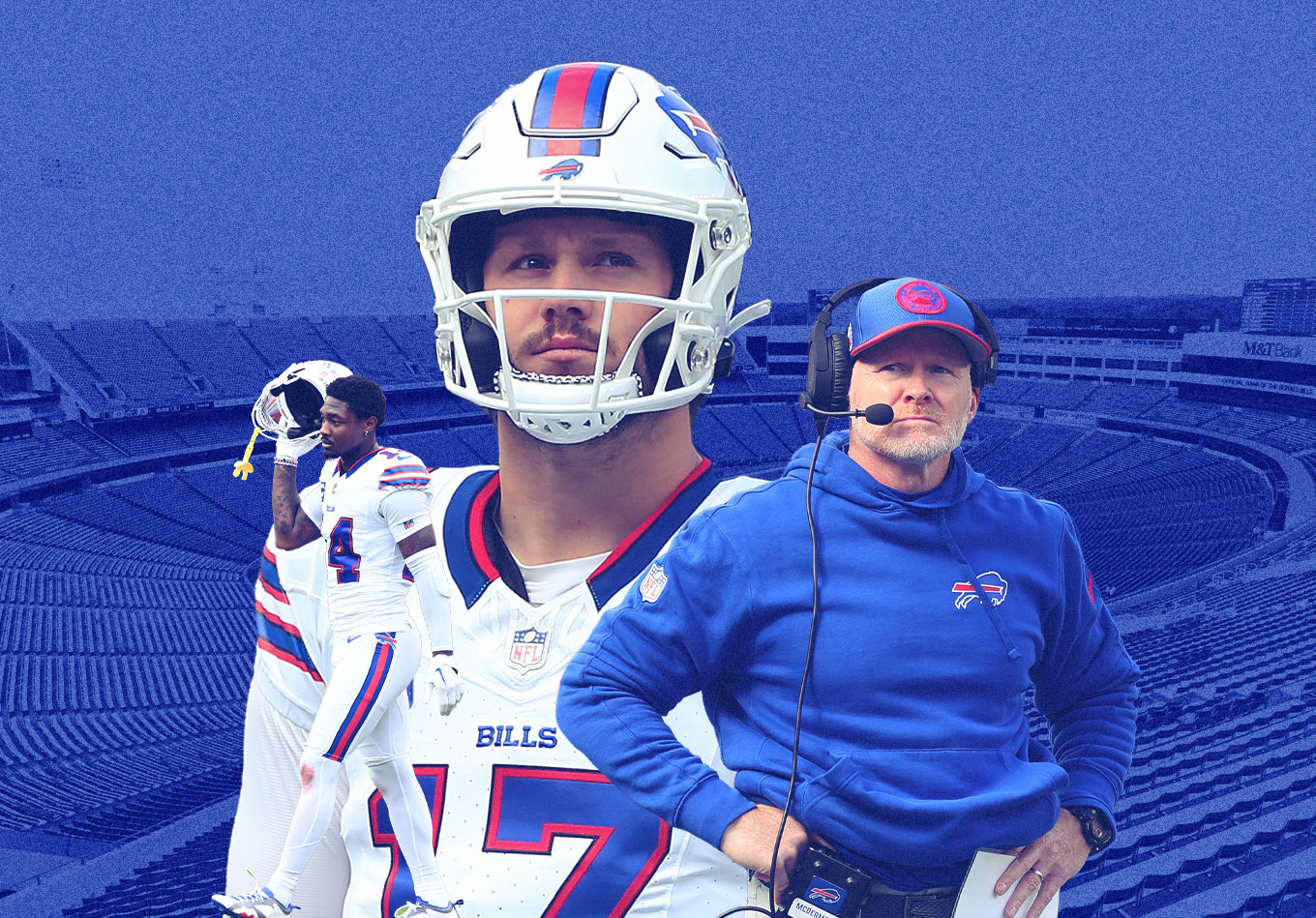They have a franchise quarterback and receiver, each in the prime of his career.
They averaged more yards per play in 2022 than every team except the Super Bowl champion Kansas City Chiefs.
They gave up the league’s second-fewest points and were 10th in yards allowed per play, and they brought back almost all of the important players from that unit. (The most notable exception was up-and-down linebacker Tremaine Edmunds, who departed in free agency.)
The Buffalo Bills have established themselves over several years as one of the annual Super Bowl contenders in the AFC, but they’ve posted mediocre results in the season’s first seven weeks.
They’re 4-3, a game behind the Miami Dolphins in the AFC East and only inching ahead of the 3-3 New York Jets, who lack a functional quarterback but hold (for the moment) a tiebreaker with Buffalo. The Bills’ plus-80 point differential is the best in the AFC and second in the whole NFL, but they’ve lost three games by a combined 15 points, one of those in overtime.
Their playoff odds, according to our projection model, have plummeted to 57.9% – better than a coin flip, but not the nearly-sure thing that Bills fans surely had in mind. Are the Bills a freight train that just needs to get back on the tracks, or are there deeper problems at hand?

The team’s first seven games suggest that the Bills have minor problems and should solve them.
An Offense That Doesn’t Raise Serious Concerns
The Bills do not have major offensive problems. They’re averaging 5.9 yards per play, fourth in the league and right in between the 6.1 and 5.7 they posted the previous two years. For the fourth time in five years, they’re in the top five in scoring.
Their peripheral numbers are encouraging, too: A 44.8% success rate is third in the NFL. The Bills are well above league average in success rate both rushing (37.9%) and passing (48.8%), where only the San Francisco 49ers and Miami Dolphins are ahead of them.
Stefon Diggs, as ever, remains Josh Allen’s favorite target and is having one of his most productive seasons in a potential Hall of Fame career. He’s in the top five in every major receiving statistic, and he’s gotten there (as usual) despite the Bills not putting another premium target on the field with him.
Diggs is essentially doubling up the next-closest Bills target (Gabe Davis) in yardage, and he’s more than doubling him up in targets and receptions. Allen has one guy he’s comfortable getting the ball to, and usually, it’s enough.
On the whole, Allen has just been … Allen, which is to say he’s been a bit uneven but, overall, one of the best quarterbacks in the NFL. Allen’s arm is a rocket, and his 8.8 air yards per throw are the eighth most among quarterbacks with 50 attempts or more. His 84.7 open-target percentage is fifth, his 80.4 catchable percentage is seventh, and his 2.92-second time to throw is the third most.

The only QBs who hold the ball longer than Allen are Deshaun Watson and Justin Fields, but unlike them, Allen makes it work, scanning the field and rolling around until he finds somewhere appealing to go with the ball (usually Diggs). Allen’s 3.40 pickable-pass percentage is middling, but his actual interception percentage (2.8, with exactly one per game so far) is the eighth-worst mark in the NFL.
And he is, of course, one of the NFL’s best-running QBs.
Put that together with a perfectly respectable, James Cook-led backfield, and the Bills have a good thing going. Their 71.4 red-zone touchdown percentage is second in the league, and their 48.3 third-down conversion percentage is third.
There’s zero reason the Bills can’t keep scoring a lot, but Allen limiting his giveaways is the most obvious path to improvement on what is already solid.
An Up-and-Down but Acceptable Defense
How does a team with such a nicely humming offense start just 4-3? Mostly by being overly porous on defense, and the Bills have been that in the first two months of the season.
They’re letting up 5.3 yards per rushing play, worse than everyone except the woeful Denver Broncos and Carolina Panthers. They’re allowing just a 35.3% rushing success rate, right on the league average, but when they get beat, they give up big chunks. And they’ve allowed those rushing successes despite lining up with eight defenders in the box on fully 50% of their snaps, a few clicks more than average.
Opposing ball carriers average 3.0 yards before contact, one of the highest marks in the league. In essence: The Bills can create some backfield chaos, but they struggle to wrap up and prevent gashings. (Breece Hall’s 83-yard burst against them on Monday Night Football in Week 1 was a preview.) Running backs are averaging exactly 100 yards a game against them.
The Bills have been a lot scarier against the pass. Despite a below-average 27.1% blitz rate, the Bills’ 9.7% sack rate is second in the league behind the Cleveland Browns’ 10.1 mark. Six defenders have at least three sacks, led by edge defender Leonard Floyd with seven.
But the Bills’ pressure comes from everywhere, and interior tackles Ed Oliver and Daquan Jones have added eight sacks between them. That’s helped the Bills get off the field despite the run defense’s intense vulnerabilities.
The Bills are surrendering 1.55 points per drive – the seventh fewest.
A Third Phase the Bills Can’t Ignore
In general, those things are indicative of a team that should be better than 4-3. The point differential suggests the same. But the Bills have frittered away some games with a mix of bad timing and marginal errors that have wound up biting them. And they’ve neglected the game’s third phase.
The Bills are leaking water on special teams, where they’ve posted negative expected points added figures in all seven of their games. Buffalo’s special teams problems were acute in Sunday’s surprising loss to the terrible New England Patriots. Kicker Tyler Bass missed a 42-yard field goal late in the second quarter, which changed the complexion of the second half as the Patriots came back to win.
The Bills allowed a 25-yard punt return on the only runback by New England’s Demario Douglas, and the Patriots got a field goal out of the deal after the offense drove 40 yards on a shortened field. Plus, of course, the defense couldn’t get a late stop as the Patriots won with a touchdown in the final seconds.
“It’s not enough, we didn’t do enough… at the end of the day, not good enough,” coach Sean McDermott said in his postgame press conference. “We gotta figure that out.”
Bass is 10 for 13 on the season, though his two other misses were from 50-plus yards. The punt coverage unit has been flimsy, letting up a 12.5-yard average on eight returns. Shortcomings in those areas helped flip the New England game, which is the difference between a 4-3 struggle that raises eyebrows and a smooth 5-2 that provides little reason for alarm.
Ponder one or two plays going differently in overtime against the Jets in Week 1, and the Bills are quite close to being exactly what their fans hoped they’d be.
Of course, that’s not how it works, and the Bills are now in a contentious fight with an incredibly tricky Dolphins team in the East. And the three losses they’ve already posted will be a drag on their efforts to not just win the division but take elusive home-field advantage should they return to the playoffs.
The Bills are in good shape, but some situational failures will require them and their fans to sweat a little bit.
